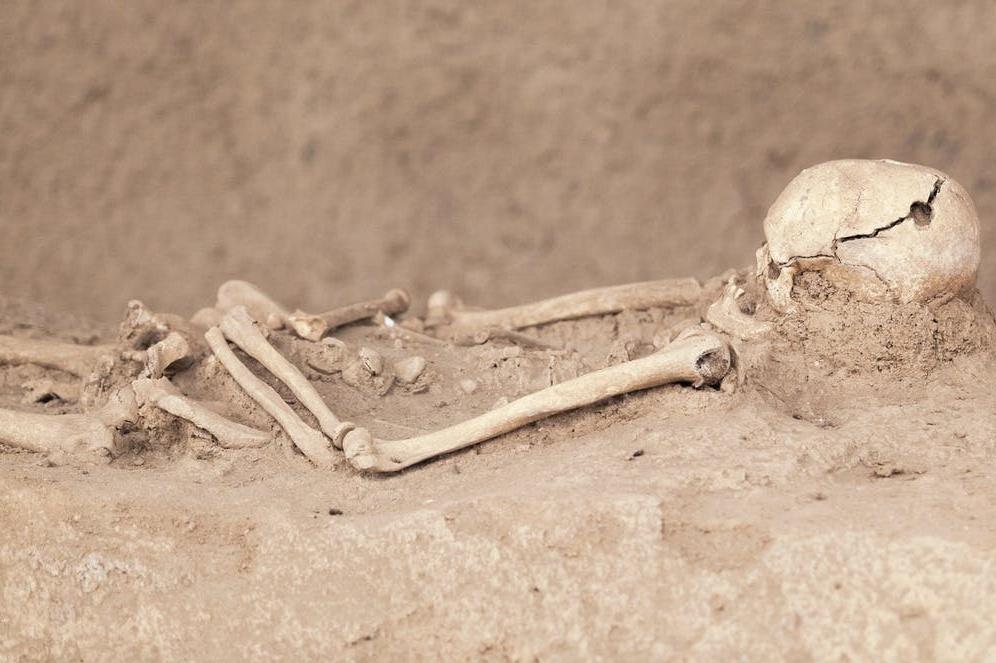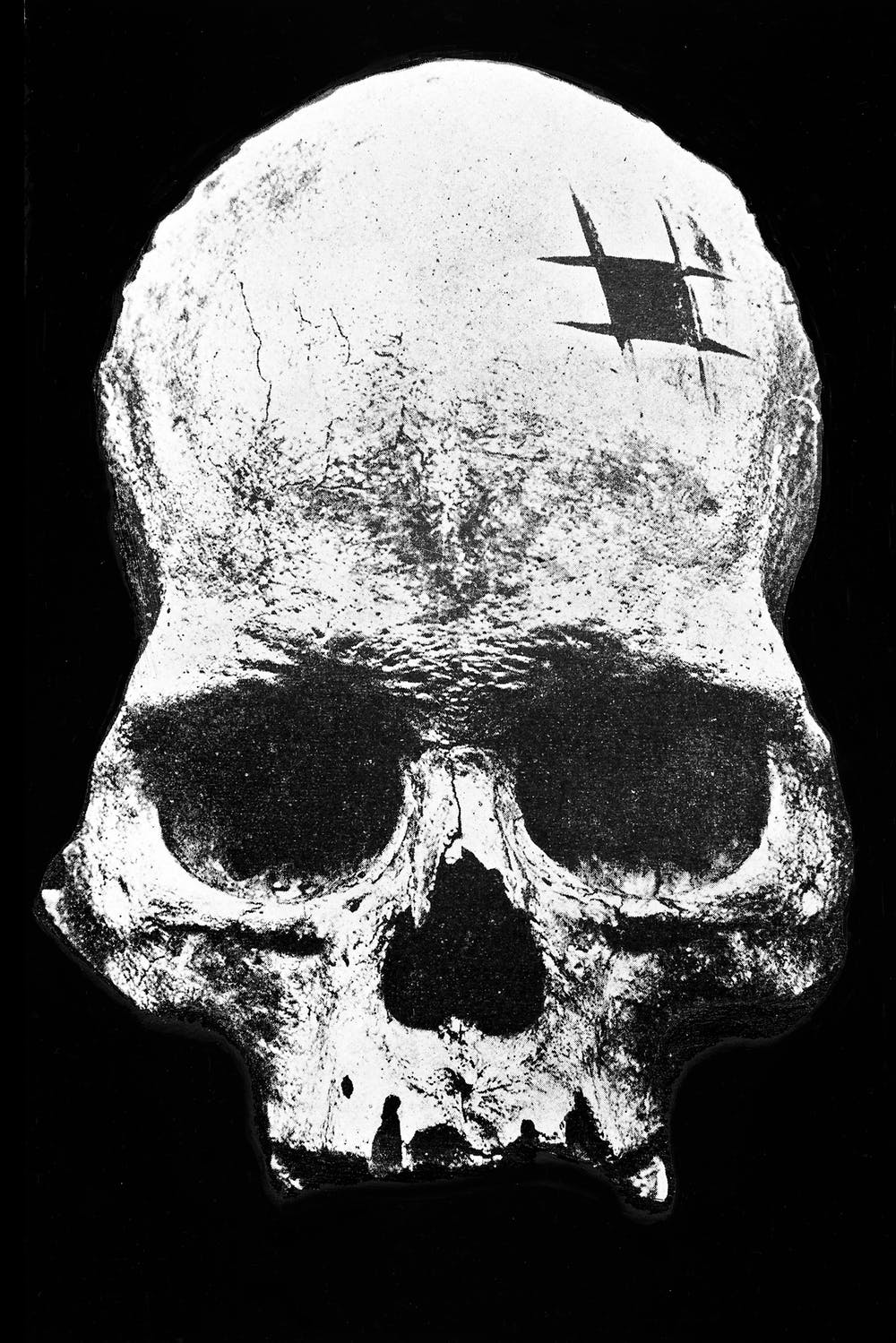Migraine myth: Drilling holes in the skull was never a cure – but it was long thought to be
One stock ‘history of medicine’ tale is that trepanning is one of the most ancient treatments for migraines

Your support helps us to tell the story
From reproductive rights to climate change to Big Tech, The Independent is on the ground when the story is developing. Whether it's investigating the financials of Elon Musk's pro-Trump PAC or producing our latest documentary, 'The A Word', which shines a light on the American women fighting for reproductive rights, we know how important it is to parse out the facts from the messaging.
At such a critical moment in US history, we need reporters on the ground. Your donation allows us to keep sending journalists to speak to both sides of the story.
The Independent is trusted by Americans across the entire political spectrum. And unlike many other quality news outlets, we choose not to lock Americans out of our reporting and analysis with paywalls. We believe quality journalism should be available to everyone, paid for by those who can afford it.
Your support makes all the difference.Trepanation, or the technique of removing bone from the skull by scraping, sawing, drilling or chiselling, has long fascinated those interested in the darker side of medical history.
One oft-repeated tale is that trepanning is also one of the most ancient treatments for migraines. As I study the history of the migraine, it certainly always caught my attention.
The word trepanation comes from the Greek trypanon, meaning a borer. The earliest known trepanned skulls date from around 10,000 BCE, and come from North Africa. There are trepanation accounts in the Hippocratic texts (5th century BCE), when it was used in cases of fracture, epilepsy or paralysis, and in the second century CE Galen wrote of his experiments with trepanation on animals in his clinical studies.
But the reasons for trepanning remain largely unknown. While the famous 17th-century physician William Harvey may have suggested that the procedure was used for migraines, recent authors have acknowledged that there is little evidence to suggest this. So where did this persistent idea come from?
Migraines and fairies
The real source of the myth seems to have come much later. In 1902, the Journal of Mental Science published a lecture by Sir Thomas Lauder Brunton, a London physician well known for his work on pharmacology and ideas about migraine pathology.
The lecture mixed neurological theory and armchair anthropology, and ranged over subjects including premonitions, telepathy, hypnotism, hallucinations, and epileptic and migrainous aura. In one notable passage, Brunton proposed that visions of fairies and the sound of their jingling bells were “nothing more” than the zigzags of migraine aura, and the aural results of nerve centre stimulation.

Brunton proposed that the openings bored into ancient Stone Age skulls during life were designed to cure migraine. His suggestion followed considerable excitement during the 1870s when the French physician and anthropologist Paul Broca claimed that ancient skulls discovered in Peru and France had not only been opened surgically during life in order to release evil spirits, but that the patients had survived. To Brunton, it seemed obvious that the holes would have been made at the request of migraine sufferers in order to “let the headache out”.
He wrote: “For when the pain of headache becomes almost unbearably severe, an instinctive desire sometimes arises either to strike the place violently in the hope of relieving the pain, or to wish that some operation could be done to remove the pain.”
The French surgeon Just Lucas-Champonnière had claimed in 1878 that some South Sea islanders still performed a similar procedure, but essentially Brunton’s ideas about trepanning were as imaginative as his thoughts on fairies.
Nevertheless, the theory gained traction. In 1913, the world-famous American physician William Osler repeated that trepanation operations had been used “for epilepsy, infantile convulsions, headache and various cerebral diseases believed to be caused by confined demons”.
By 1931, T Wilson Parry (who was partial to the odd experiment of his own) reasoned in The Lancet that as the large numbers of trepanned skulls found throughout France could not all be accounted for by epilepsy, the procedure must also have been used to cast out “other devils”.
He proposed that this included disorders with “exasperating” head symptoms such as migraine, giddiness, “and distracting noises of the head”.
A ‘burr hole’
If Victorian theories about ancient trepanation for migraine were largely speculative, there is evidence of cutting holes in skulls for migraine somewhat closer to home. In 1936, Alfred Goltman, a physician from Tennessee, observed something strange about a woman with migraine that he was treating for allergies.
In the left frontal region of her skull, the woman had a depression, an inch in diameter, with a marked concentration of blood vessels. Four years earlier, she had been admitted to the care of Dr Raphael Eustace Semmes, the first neurosurgeon in Memphis, who had trained under Harvey Cushing, the American “father” of modern neurosurgery.
Semmes had drilled a small circular opening known as a “burr hole” during one of the woman’s severe headaches, while she was under local anaesthetic. As he opened the thick membrane surrounding the brain, “a quantity of fluid escaped under increased pressure”. There was no evidence of a tumour.
This now seems a troubling era in experimental interventionist neurosurgery. Between the 1890s and the 1920s, some surgeons believed that brain surgery could “cure” inherited criminal tendencies. Children referred by juvenile courts were operated on in an attempt to release “pressure on the brain”, a procedure with a mortality rate of up to 42 per cent. By the 1930s, frontal lobotomy was emerging as a treatment for mental illness.
Semmes’s patient survived the surgery, but her migraine headaches did not stop. Goltman noticed that during her headaches, the depression left by the surgery began to fill up. As the migraine attack ended, the swelling would recede.
Goltman’s observations helped influence the widespread acceptance of a theory that would dominate understanding of migraine until the 1970s: that the origin of migraine headache must be vascular, characterised by dilation of the blood vessels during the attack.
While we now see migraine as neurological, much still remains to be discovered about its causes and mechanisms in the brain. In some ways, trepanning does seem a logical response to the intense pain of migraine. As Andrew Levy notes in his memoir: “The migraining head wants to be cut open; it longs to be cut open.” This does not, of course, mean that it should be.
Katherine Foxhall is a lecturer in history at the University of Leicester. This article was first published in The Conversation
Join our commenting forum
Join thought-provoking conversations, follow other Independent readers and see their replies
Comments